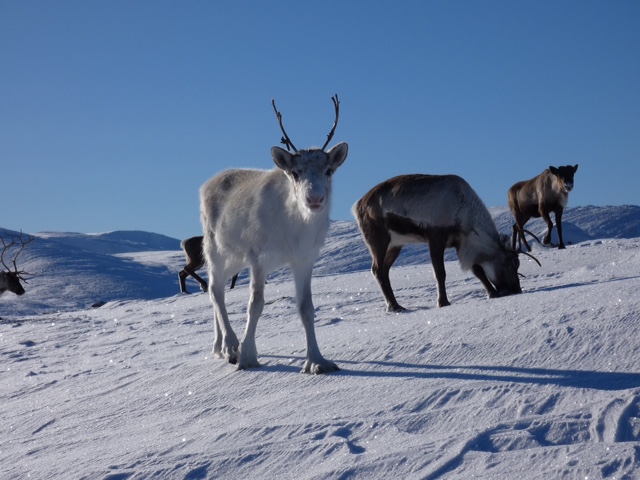At the end of Hill Trips, we often get many questions about climate change and how it affects the reindeer. For those interested, here’s a blog on how we think it affects our reindeer, how reindeer are affected worldwide and things people could do individually to help fight it.
Weather records of the past decades clearly show that the Cairngorms have gotten milder and more moist. There have always been fluctuations in temperature with periods of warm winters and periods of colder ones, as well as periods of hot dry summers as well as periods of cold and wet ones. However, the overall trend is moving towards warmer and wetter. This of course affects the plants, trees, and wildlife. As warmer and wetter conditions are suitable for ticks, we’ve seen an uprise in tick-related problems. Luckily we are quite savvy in finding ways to battle this, and granted that we spot the illness, are usually able to treat the reindeer.

Other than that we see a problem with winters not finishing ‘cleanly’ and spring showing its face for a few days or a week and then disappearing again. This affects the growth of plants. Once plants start growing but freeze mid-growth, this changes their structure and if reindeer eat these plants this can cause problems with their guts. At the moment we are working on a way to prevent and to treat this, and have managed to succeed in some cases with new vaccinations.
Worldwide, there’s a different story, as reindeer numbers have always fluctuated hugely and it’s difficult to pinpoint whether or not climate change is affecting these fluctuations at all. We do know that over the past two decades, reindeer numbers have more than halved, leaving the current population at about two million. This number is lower than usual lows and the decrease has gone on for a longer period of time than other periods of decline. Problems that may have arisen with global warming are numerous, here are a few to consider. (1) Warmer climates enable other plants than lichen to grow, out-competing lichen. This is the main plant in most species of reindeer’s diets, so as a consequence there may be a shortage of food leading to the starving of part of the population. (2) Warmer weather does not only encourage ticks to multiply, there are more other insects around as well. As the reindeer hate biting beasties, they’ll spend time and energy getting away from them (often going to mountain tops where there’s still snow) rather than staying down spending most of their summer time eating. This means they don’t store enough body reserves to survive winter later in the year. (3) The last major problem is that there’s more rain near the end of winter rather than snow. Whilst reindeer can dig through snow to get to lichen, they can’t dig through frozen rain, again causing starvation.
Reindeer are known to be adaptable, being able to survive temperatures as low as -70 and as high as +35 Celsius. Though their numbers are at a low just now, we can only hope that they up again. And we may still be able to stop global warming too, which would, we assume, benefit reindeer. Of course it doesn’t stop at reindeer though, as global warming is already affecting both animals and people in huge areas all over the world.
Now there are big discussions going on about how to stop global warming, with people even calling Greta Thunberg a climate denier as she advocates that people should make lifestyle changes, thereby indicating that we individuals can still turn it around. To most scientists this seems highly unlikely, and change needs to come from higher up (big businesses and governments) in order to have an effect. However, for a message to come across the messenger needs to be trustworthy and reliable too, which goes hand in hand with Thunberg leading a climate-friendly lifestyle whilst campaigning for governments and companies to change our current system. I’d say in order to do something and make a statement, change whatever you can in your own life to become more climate-friendly, e.g. buying less new stuff, buying local produce rather than import, flying less, and opting for public transport, bicycles and your feet instead of your car when possible. It’s also worth your while having a look at what your workplace could change to be more environmentally friendly (see our blog on ‘our bit for the environment’). If you can then let (local) politicians and companies hear your voice, either via social media, emails and messages, and/or protests, lobbying or similar, you’re practically doing everything you can. System change not climate change! Power to the people.
Manouk
Read more on climate change
BBC articles:
https://www.bbc.co.uk/news/science-environment-50614518
https://www.bbc.co.uk/news/science-environment-50588128
Summary on climate change scientific facts and how to fix it:
https://350.org/science/?gclid=EAIaIQobChMIiYj_5o-X5gIVwbTtCh1d4AbCEAAYAyAAEgKeXvD_BwE
Read more on reindeer populations affected by it
Ecowatch article:
https://www.ecowatch.com/reindeer-population-climate-change-2623281571.html
The Guardian article:
